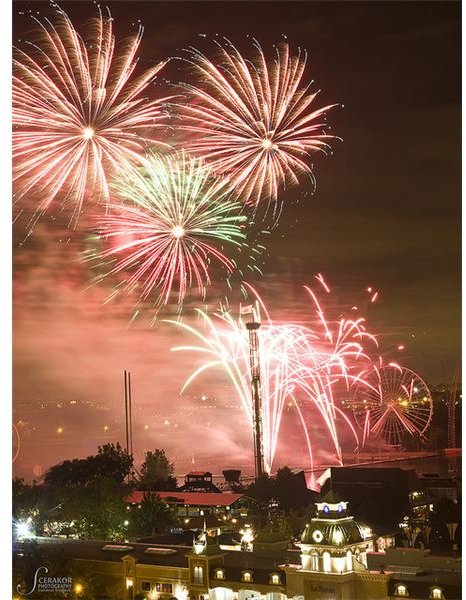Tips on Photographing Fireworks: Take Better Photos of Firework Displays
Get Your Cameras Ready!
Summer time, especially around the Fourth of July, means fireworks. Learning how to photograph fireworks can be a fun and exciting challenge for a photographer. In this article, I will point you in the right direction on how to do just that. Learn some of the basic (yet essential) pieces of equipment needed for success, camera settings that work for me (and why), as well as a couple of techniques to try out. Armed with this basic information, you will be better prepared to capture a peice of the show.
Equipment
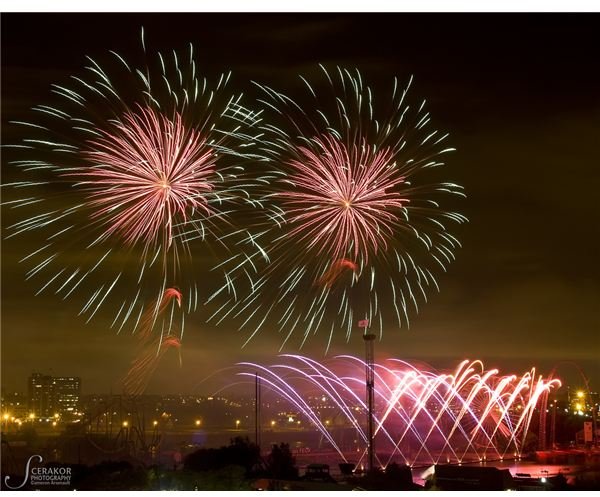
There are a couple pieces of photography gear which make or break a fireworks shot. Obviously the first thing you need is a camera which is able to utilize a slow shutter speed. Most digital cameras these days are able to do this either in their manual modes or through a specific scene mode.
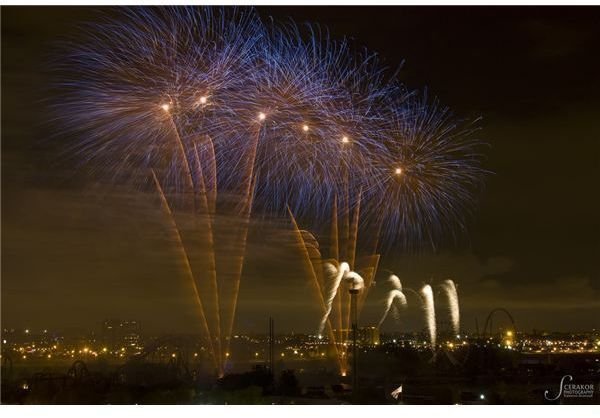
Next, a sturdy tripod is the most important piece of equipment you can have. Despite what you see in every fireworks demonstration, you are extremely unlikely to get a decent shot of fireworks if you are shooting handheld.
Finally, although not essential, an external shutter release makes your life a lot easier. Using a shutter release minimizes camera shake induced when pressing the shutter and is essential if you are going to be using the BULB mode as I describe below. As well, a shutter release allows you to be able to keep your eyes away from the viewfinder and time the firework bursts better. With these key pieces of equipment, you are ready to set up your camera.
Camera Settings
If you are using a point-and-shoot camera which doesn’t allow you to adjust the camera settings manually, put your confidence in the scene modes available. Often there will be a fireworks mode that you can use and if not, try a night landscape mode. Even with a non-manual camera, the general tips presented in this article are still applicable.
When using a DSLR, or another camera which has manual controls, I highly urge you to flip that camera into the dreaded M mode. This gives you full control of how your image is going to come out.
First, choose a low to mid ISO setting, such as 200, to begin with. I would also start off with a mid-range for the aperture, such as F/8, in order to optimize depth of field and hit your lens’ sweet spot. Both of these settings can be easily adjusted to get the proper exposure as necessary later.
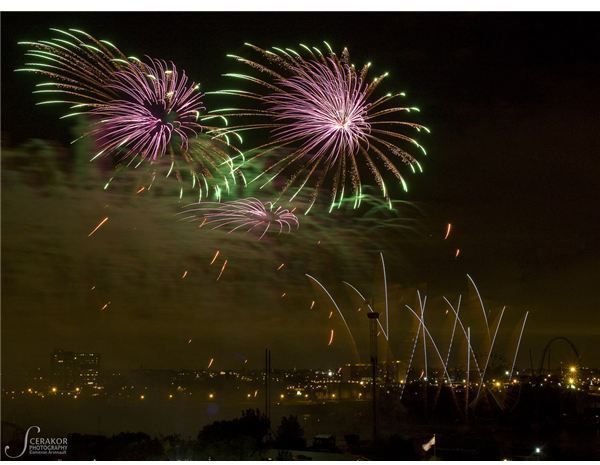
The critical setting when figuring out how to photograph fireworks displays is the shutter speed. Like much night photography, you are going to have to use a slightly longer shutter speed. There are two approaches that you can take. First, you can set the shutter speed to 2 or 3 seconds and adjust it as necessary. This gives you control over the shutter but lacks the versatility to change the shutter speed quickly from one shot to the next. My preferred method is to put the camera on BULB mode (while using a shutter release) and hold down the shutter as long as necessary. This allows you to time firework bursts, adjust exposure time easily yet it lacks a consistent background exposure.
The final camera setting to verify is the focus. When learning how to photograph fireworks displays you will learn quickly that autofocus is your enemy. Like many other low light situations, your autofocus may have to search (and often fail) trying to find a point to focus on. This could be detrimental in capturing fireworks as it seems like they are over almost before they start. Switch your camera to manual focus before you start and you can easily avoid this problem.
Fireworks Shooting Procedure
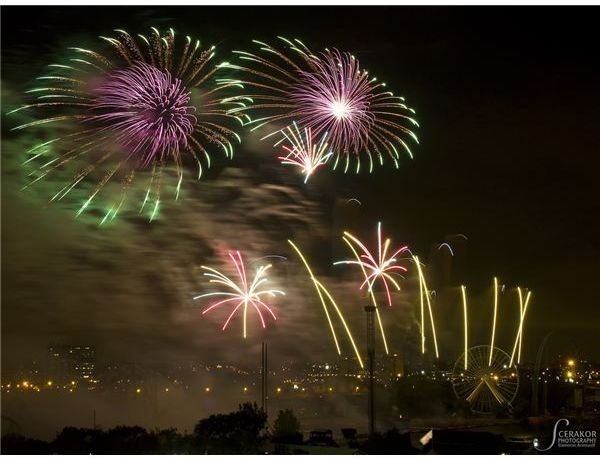
Although every photographer has their own style, I’m going to run you through my typical shooting process. These are some good starting points for your attempts and I expect you to modify these to your own processes.
-
Get your camera settings ready. Using some of the guidelines of this article, make sure that your camera is ready to go beforehand.
-
Frame your shot. Once you have got yourself set up and in position (with a sturdy tripod) you should start thinking about framing your shot. Try to include some foreground subjects (buildings, grass, other observers, etc.) as it grounds your image and gives some more reality to the image. Make sure you leave ample room for the fireworks display to unfold above the ground though! Throughout your shoot, make sure you consider taking some vertical images as well. All in all, get your first shots framed before they start and adjust as you go.
-
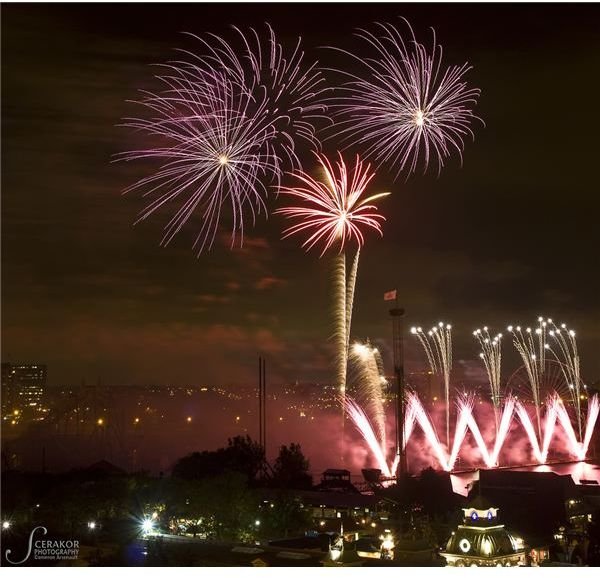
Test Shot/Adjust. If the light is already constant (the sun isn’t still setting) take a few test shots to make sure that your foreground subject is properly exposed. Don’t worry too much about the brightness of the fireworks for now. Adjust your ISO and aperture accordingly.
-
Fire away. Once the fireworks display has began, start taking your pictures. Try to time fireworks bursts to maximize the amount that you capture. Try getting firework shots from the moment they leave the ground all the way until they finish bursting. When you are using a shutter release, experiment with varying shutter speeds.
-
Reframe. Don’t forget to reframe your shots occasionally. Don’t forget your vertical shots.
-
Have fun and experiment.
Tricks and Conclusions
Once you have mastered the basic techniques above, try your hand at one of these tricks for unique firework shots.
The first trick is a way to get a full sky of fireworks consisting of many of the explosions that may come one after another. The only extra piece of equipment you’ll need is a hat. Begin by taking a picture like normal, except leave the shutter open with the shutter release. After the first explosion, while awaiting the next one(s) to come, lightly cover your lens with the hat. This stops the ambient light from entering the camera. When the subsequent fireworks are going off you can remove the hat to capture these too. This sort of thing takes a lot of practice to get right, but can yield great skies filled with colored explosions.
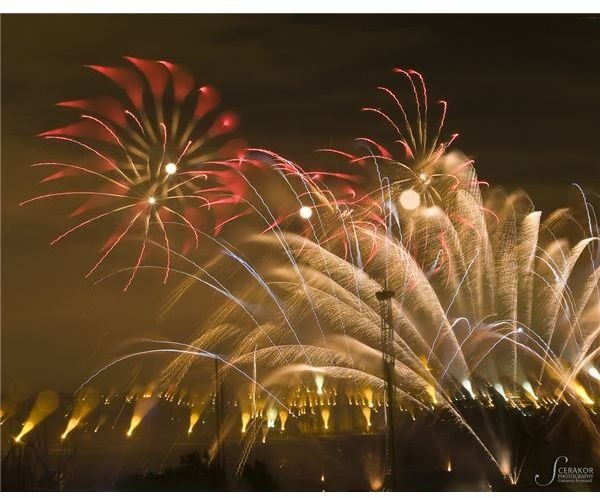
The second technique that you can play with is called “Focus Blurring”. In the middle of an exposure, try varying the manual focus of your camera so that the fireworks go out and back into focus. Varying the focus during the exposure blurs the lines of light made by the fireworks giving different widths of light. This technique, although highly unpredictable, can yield some interesting results.
By using some of these basic starting points outlined above, and even some of these new techniques, you are well on your way to learning how to photograph fireworks displays. Next time that your city is planning an event with fireworks, grab you camera and tripod and put some of these into practice.
